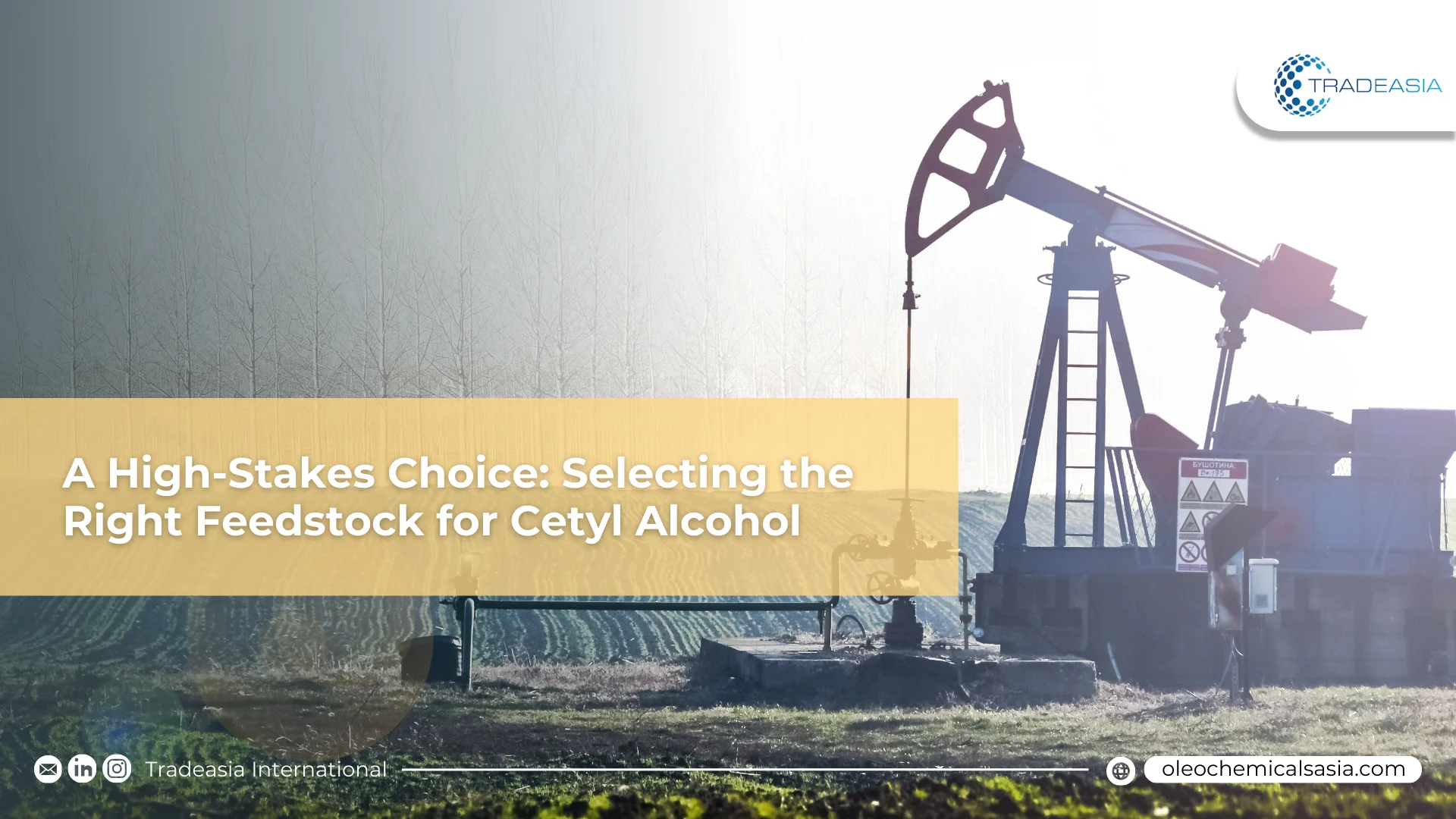A High-Stakes Choice: Selecting the Right Feedstock for Cetyl Alcohol

Table of Content
-
A Tale of Two Oils: The Cost and Composition Divide
-
Why Natural Feedstocks Continue to Win
While palm oil leads the pack, a savvy business leader always understands the alternatives. Evaluating the full spectrum of raw materials for cetyl alcohol—from other tropical oils to synthetic compounds—is crucial for risk management and strategic planning. At Tradeasia International, we believe an informed choice is a powerful one. By navigating the nuances of each feedstock, we empower our partners to build supply chains that are not only cost-effective but also perfectly aligned with their product goals.
A Tale of Two Oils: The Cost and Composition Divide
When comparing the two leading vegetable oil sources, palm and coconut, the differences are stark. Commercially, palm oil consistently holds a price advantage, with its average cost trading 15-20% below coconut oil over the last three years. Chemically, the story is even more distinct. Cetyl alcohol demands a C16 fatty acid chain, which palm oil provides in abundance at 44% concentration. Coconut oil’s strength, however, lies in medium-chain fatty acids like lauric acid (C12). An industry maxim holds that "the best feedstock is the one that requires the least work," and palm’s natural alignment with the C16 chain makes it a far more direct and efficient raw material for producing cetyl alcohol.
Why Natural Feedstocks Continue to Win
The market has spoken clearly in the debate between natural and synthetic sources. Today, naturally-derived fatty alcohols command over 90% of the global market. The primary reason is the powerful consumer-driven demand for "vegetable-derived" and "clean" ingredients on product labels, especially in the personal care industry. While petroleum can be used to synthesize alcohols, its price volatility and fossil-fuel origins have made it a far less attractive option for brands looking to connect with modern consumers. This market reality ensures that efficient, plant-based feedstocks like palm oil will remain the cornerstone of the industry for years to come.
Sources:
-
Commodity Prices Index, IndexMundi. https://www.indexmundi.com/commodities/
-
Fatty Acid Composition of Vegetable Oils, ScienceDirect. https://www.sciencedirect.com/topics/agricultural-and-biological-sciences/fatty-acid-composition
-
Market Dynamics of Lauric and Palmitic Oils, Oleochemicals Asia. https://www.oleochemicalsasia.com/

Leave a Comment